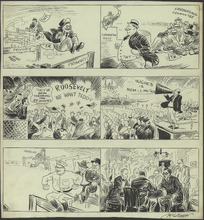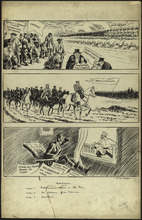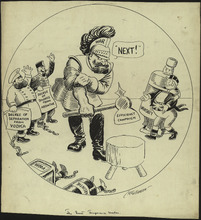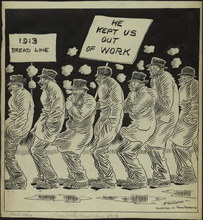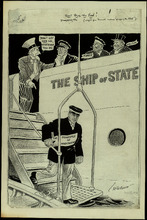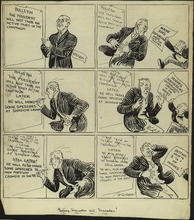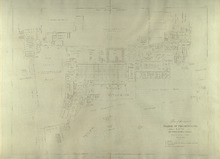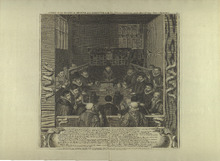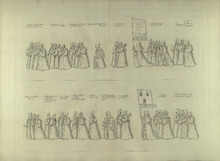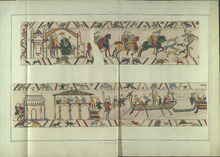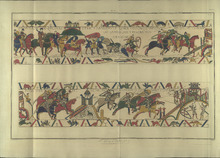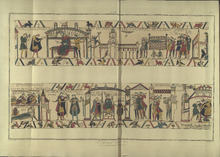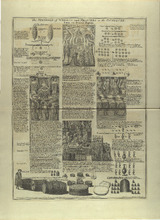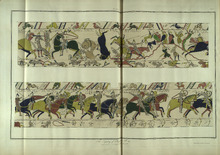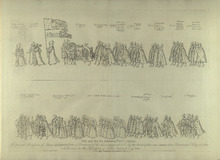JM-137: 1912 Presidential Election
This cartoon illustrates the events that occured in the presidential election of 1912. The top left panel shows former president, Theodore Roosevelt, obviously beating Taft in the primary elections. This reflected the fact that most voters at the time preferred Theodore Roosevelt to President Taft for reelection. The top right panel shows President Taft winning the primary election, because Roosevelt has been tackled by the credentials committee. The credentials committee was responsible for determining, which men were eligible to vote in the primary elections of 1912. The middle panel shows nominations for the Republican primary. The nomination of the left is for former President Theodore Roosevelt. The nomination on the right is for Charles Evans Hughes, former governor of New York. The bottom panel shows the race continuing, and a group of men sitting in a room. (Summary created by Mary Delano, MU History Intern, Spring 2018)
